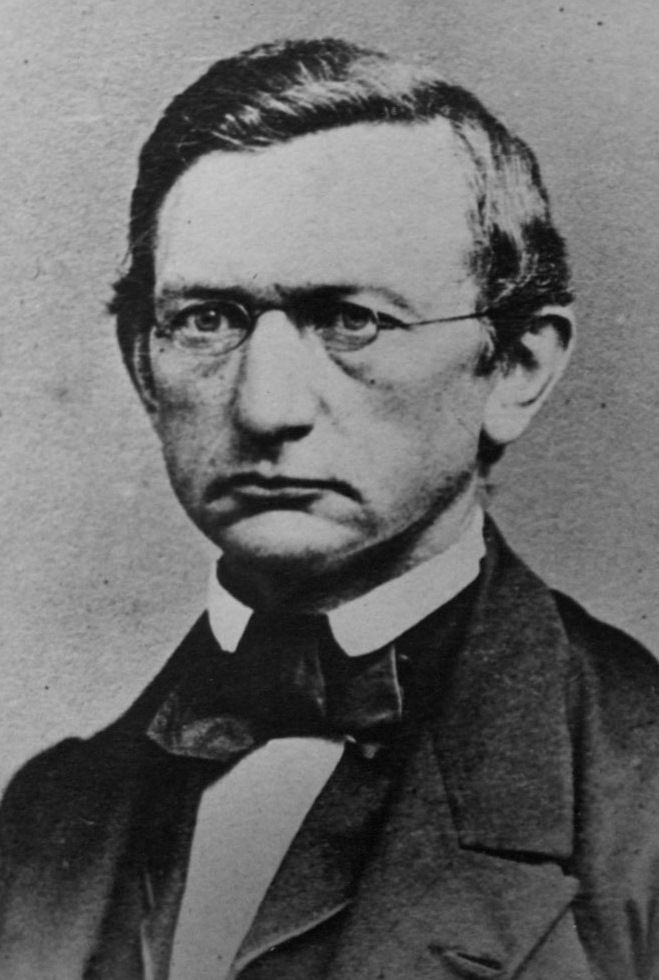Nationality German Fields Geochemistry Parents William Hillebrand | Role Chemist Name William Hillebrand | |
 | ||
Born November 13, 1821Nieheim, Westphalia, Germany ( 1821-11-13 ) Died February 7, 1925, United States of America Books Applied inorganic analysis Education Heidelberg University, Cornell University | ||
Children Harold Newcomb Hillebrand | ||
William Hillebrand (November 13, 1821 – July 13, 1886) was a German physician. He traveled the world, including over 20 years in the Hawaiian islands. In 1850, Hillebrand lived at what is now Foster Botanical Garden in Honolulu. He also became known as a botanist.
Contents
Life and career
Hillebrand was born on November 13, 1821 in Nieheim, Province of Westphalia, Prussia. His father was Judge Franz Josef Hillebrand, and mother Louise Pauline Konig. He studied medicine at Heidelberg and Berlin, and practiced at Paderborn. He sought a warmer climate to recover from a lung problem, (perhaps tuberculosis), first traveling to Australia in 1849, and then the Philippines.
Hillebrand then went to San Francisco and finally arrived in the Hawaii December 22, 1850. He stayed for a little over 20 years and made significant contributions that endure to this day. He was able to speak the Hawaiian language as well as German, English, Latin, and French.
He went into practice with Dr. Wesley Newcomb, and married his stepdaughter Anna Post on November 16, 1852. In 1853, Hillebrand purchased 13 acres (53,000 m2) of land from Queen Kalama, just a short distance from where he worked. He had a keen interest in plants, and over the years, planted a number of exotic and native trees in his garden.
Six years after his arrival, he and nine other Honolulu physicians petitioned to charter an organization called the Hawaiian Medical Society. Two months later, the petition was granted. Today, it is the Hawaii Medical Association. After the death of Thomas Charles Byde Rooke in 1858, he was appointed physician to the royal family of King Kamehameha IV. Hillebrand also served as chief (and only) physician at The Queen's Hospital (now The Queen's Medical Center), from 1860 to 1871. The hospital was named after Queen Emma, Dr. Rooke's adoptive daughter who was Kamehameha IV's wife.
In 1865 he was appointed to the King's Privy Council, the Board of Health, and Bureau of Immigration. In April 1865 Hillebrand traveled to Asia and the East Indies on behalf of the Hawaiian government. He had three main goals: to find sources of labor for the sugarcane plantations, to learn about the latest treatments for leprosy, and to collect and import plants and animals that would be useful to the Islands. Hillebrand wrote an article on leprosy that was published in 1883. Another European immigrant to Hawaii, Joseph Francis Charles Rock (1884–1962) would continue Hillebrand's work of identifying Hawaiian species.
Hillebrand moved back to Germany in 1871. In 1877 he arranged for the first immigrants from Portugal to come to Hawaii as plantation workers. For nearly a decade he considered returning to Hawaii. In 1880, he determined that would never happen, so sold his home to shipping entrepreneur Captain Thomas Foster and his wife Mary, who lived on an adjacent lot. Years later, Mary Foster bequeathed the land to the city, which opened it to the public as Foster Botanical Garden in 1930.
He died July 13, 1886 in Heidelberg. He is the father of William Francis Hillebrand (1853–1925), an American chemist.
